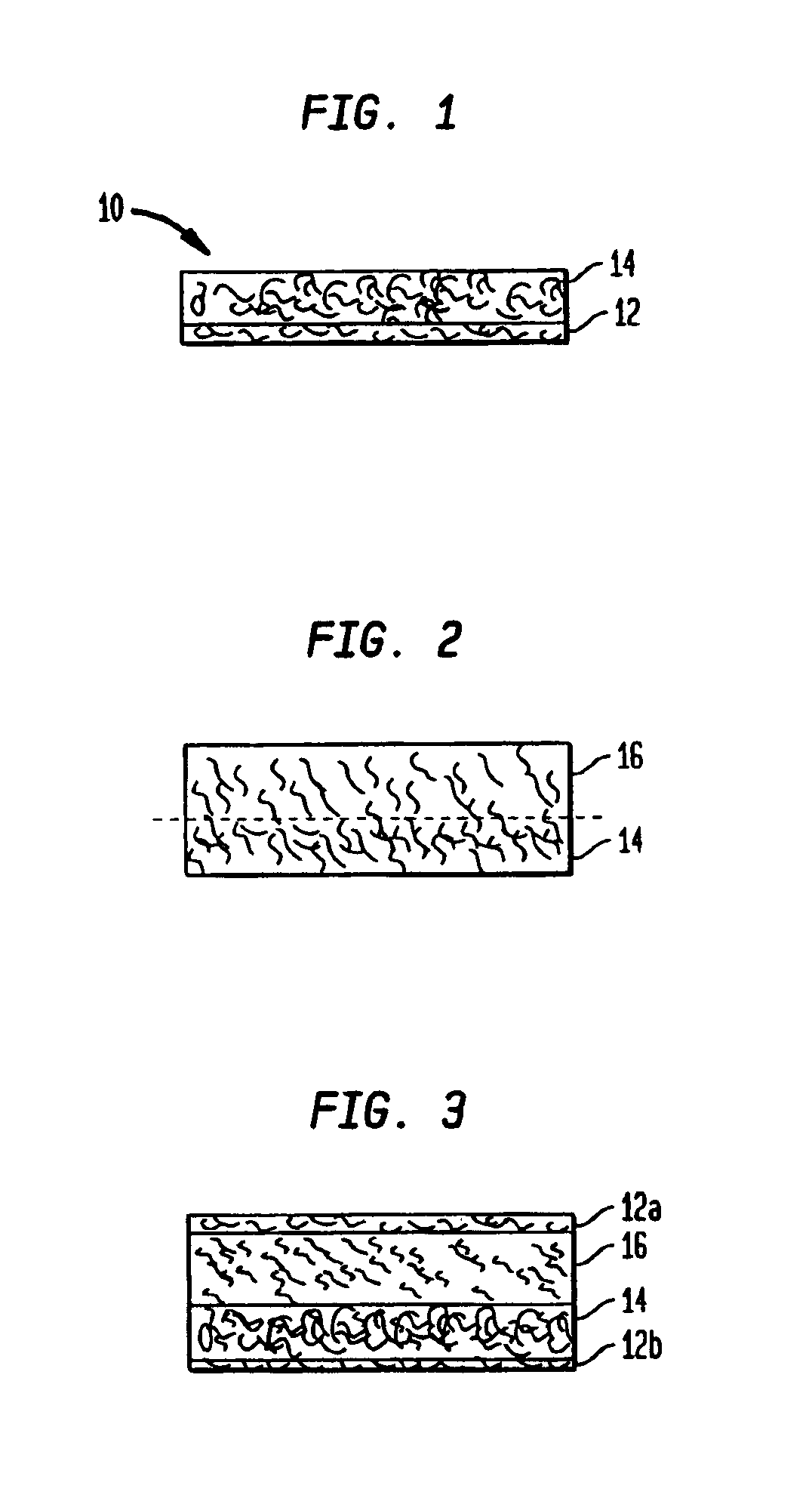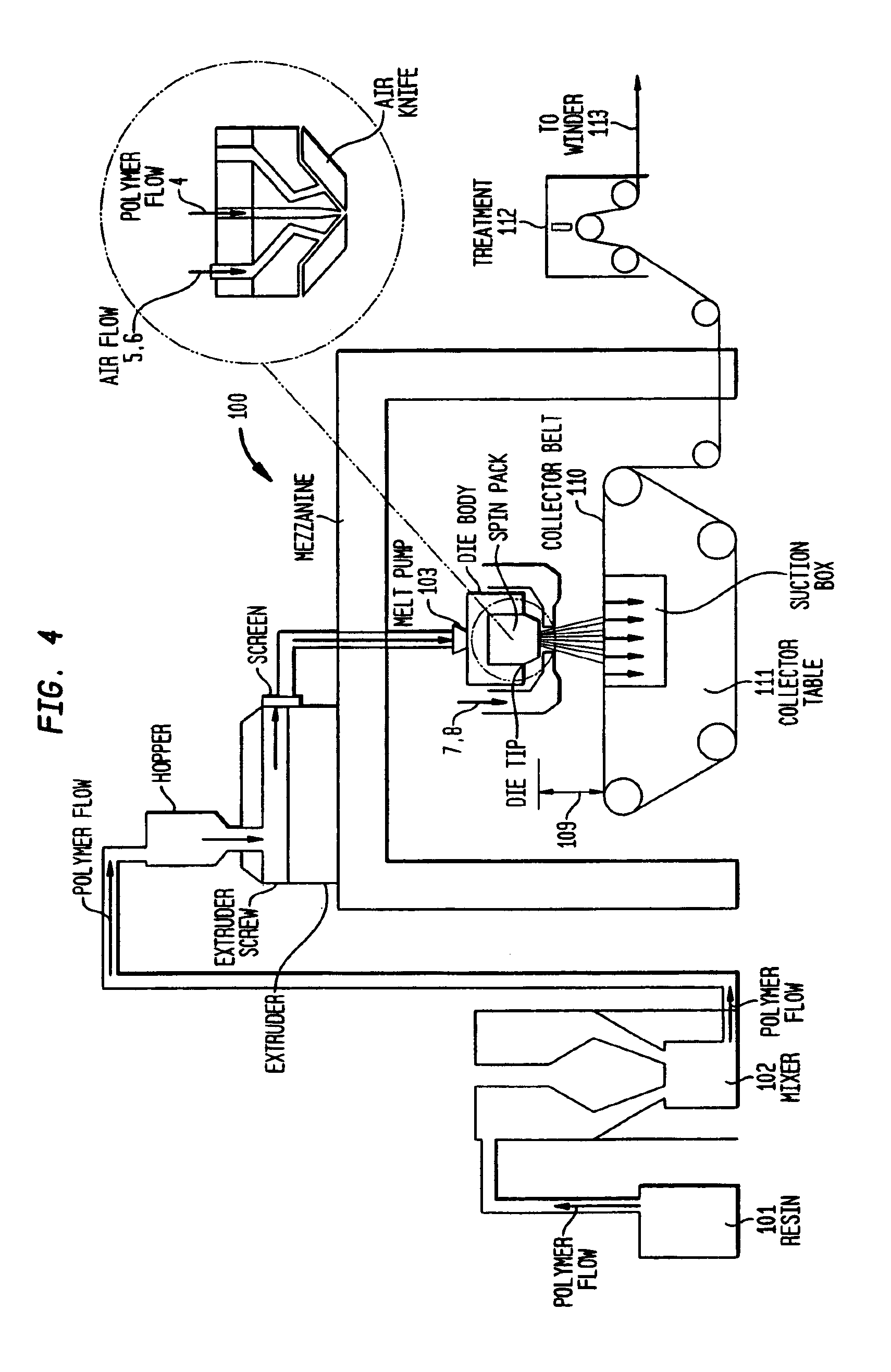Filter media
a filter media and filter media technology, applied in the field of air filters, can solve the problems of low filtration efficiency, low filtration efficiency, and high cost of adhesives, and achieve the effects of reducing filtration performance, enhancing filtration performance characteristics, and reducing filtration performan
- Summary
- Abstract
- Description
- Claims
- Application Information
AI Technical Summary
Benefits of technology
Problems solved by technology
Method used
Image
Examples
examples
TABLE IFine fiber designed to make ASHRAE filters with improvedfiltration performance after IPA / DOP soak.80-85%80-85%withwithTYPARTYPAREFFICIENCY LEVEL90-95%3121 N3151C60-65%Air Flow Resistance5.03.393.431.52(mmH2O @ 10.5 FPM)NaCl Penetration25.3433.3830.3770.4(% @ 10.5 FPM)AFTER IPA / DOP SOAKALPHA AFTER IPA / DOP11.9214.115.110.0SOAK
The 90-95% ASHRAE material was prepared with 34 g / m2 polypropylene spun bond as a first supporting layer and a second spun bond polypropylene supporting layer of 8.5 g / m2. PP3546G (1200 MF resin) was used in a coarse layer at 100 g / m2, with a fine fiber layer blown onto the coarse layer at 24 g / m2. The average fiber diameter of the fine fibers was about 1 micron.
The 80-85% ASHRAE material was prepared with TYPAR 3121N (fiber diameter of 5-20 μm) and TYPAR 3151C (fiber diameter of 5-20 μm) as the backing material. HH441 (400 MF resin) was used in a coarse layer at 80 g / m2, with a fine fiber layer blown onto the coarse layer at 22 g / m2. The average fiber dia...
PUM
| Property | Measurement | Unit |
|---|---|---|
| diameter | aaaaa | aaaaa |
| diameter | aaaaa | aaaaa |
| diameter | aaaaa | aaaaa |
Abstract
Description
Claims
Application Information
 Login to View More
Login to View More - R&D
- Intellectual Property
- Life Sciences
- Materials
- Tech Scout
- Unparalleled Data Quality
- Higher Quality Content
- 60% Fewer Hallucinations
Browse by: Latest US Patents, China's latest patents, Technical Efficacy Thesaurus, Application Domain, Technology Topic, Popular Technical Reports.
© 2025 PatSnap. All rights reserved.Legal|Privacy policy|Modern Slavery Act Transparency Statement|Sitemap|About US| Contact US: help@patsnap.com



